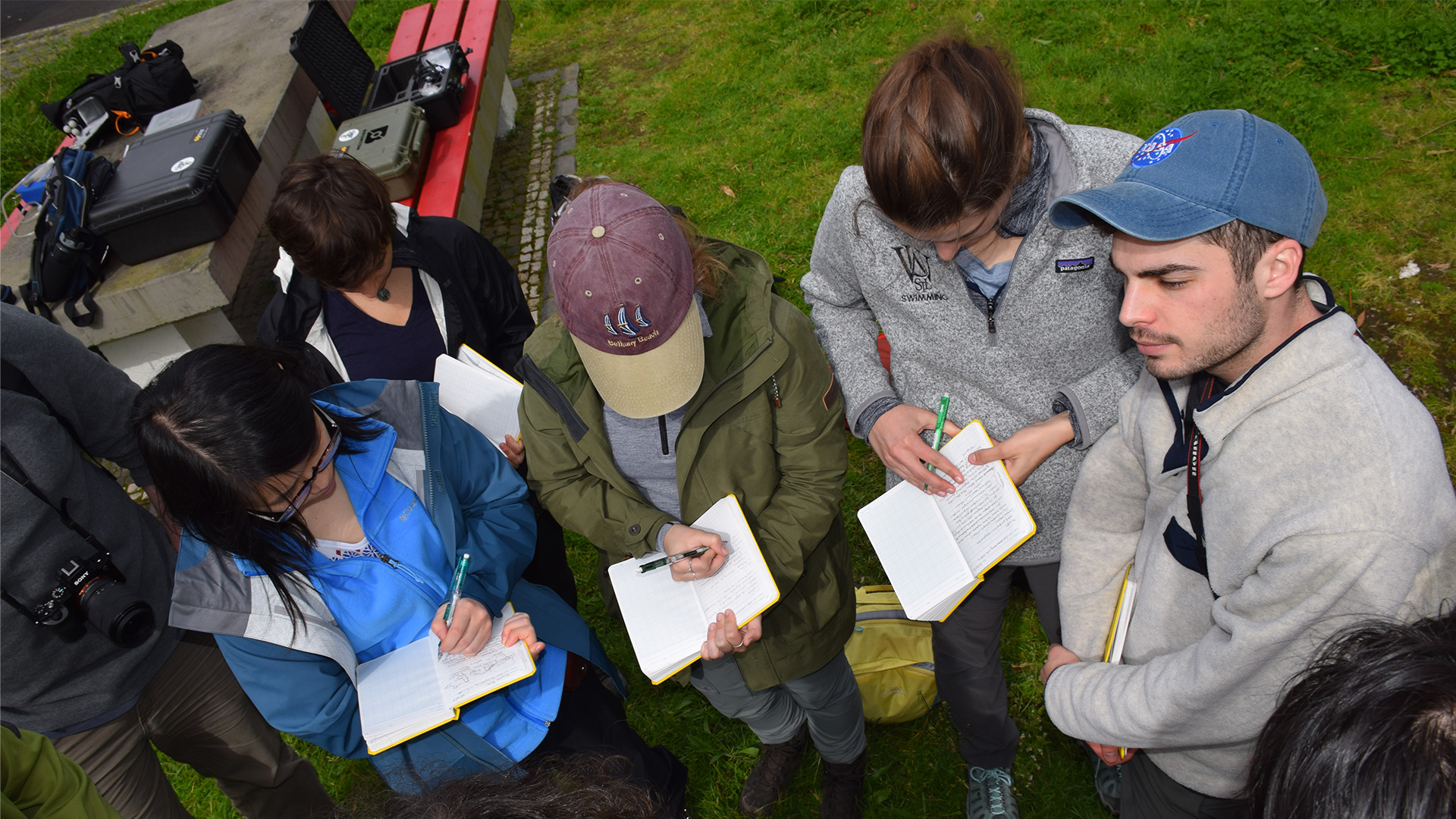Volcanic craters, fumaroles, and hot springs mark the rugged, breathtaking landscape of São Miguel Island, in the remote Portuguese Azores, where undergraduate students from Washington University traveled to study field geology techniques during their 2018 spring break.
In this upper-division field geology course, the students advanced their skills in field data collection and interpretation at the triple junction of the American, African, and European tectonic plates. The course was led by Alexander S. Bradley and Philip Skemer in the Department of earth and planetary sciences in Arts & Sciences.
We went to the Azores for two reasons: to see the material that we studied in the classroom about how the volcanic processes formed those islands and to learn field geology. What it’s like to be out there studying, measuring, learning about geology outside the classroom.
Anton Beer
Alexander S. Bradley, associate professor of earth and planetary sciences explained, “Geology is a historical science in many respects. We’re presented with evidence of events that occurred in the past. Our job is to piece those events together and try to understand the story. What is the history of the various events that have occurred? And can we use that to better understand the earth, our history, and what will happen in the future?”
